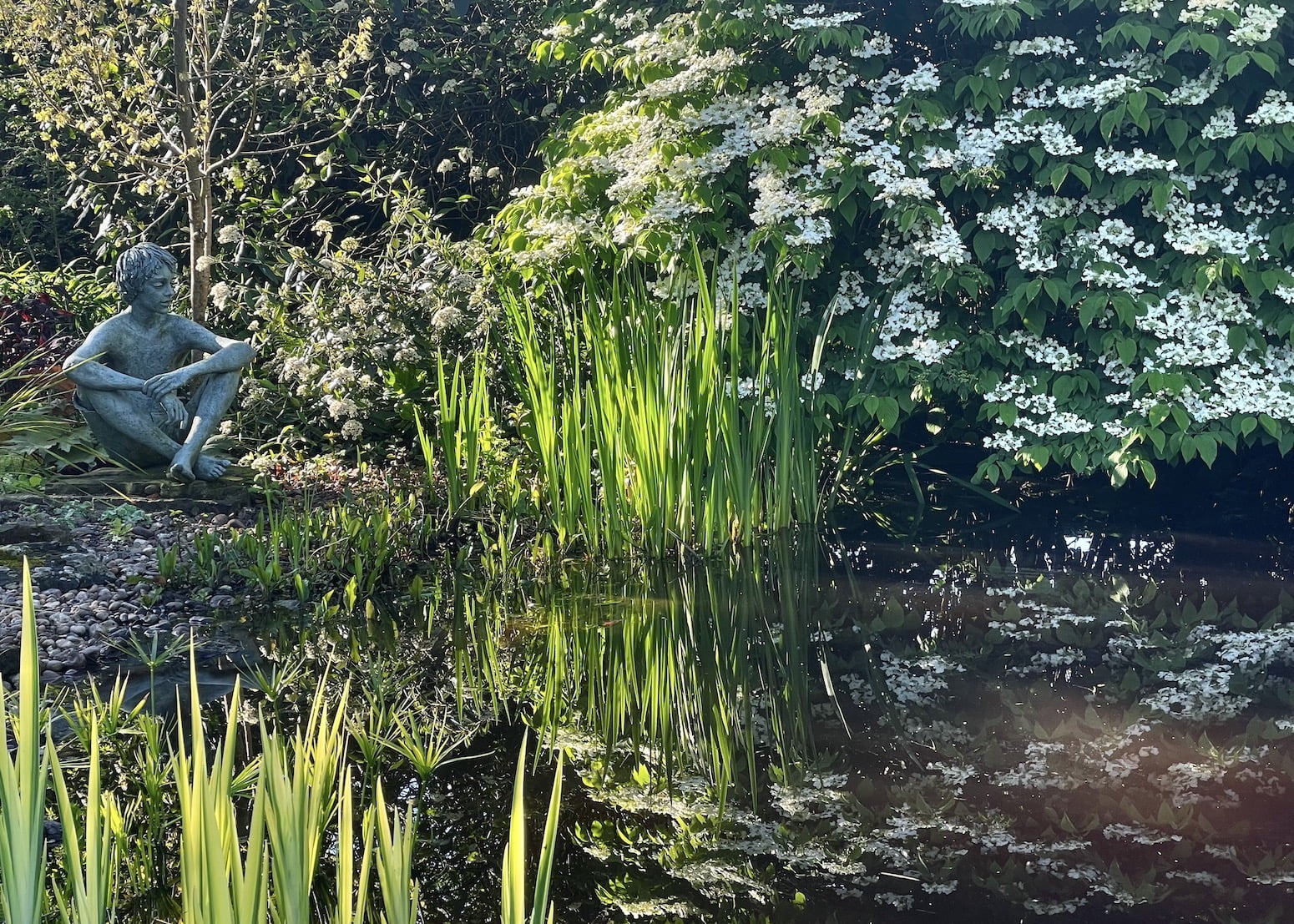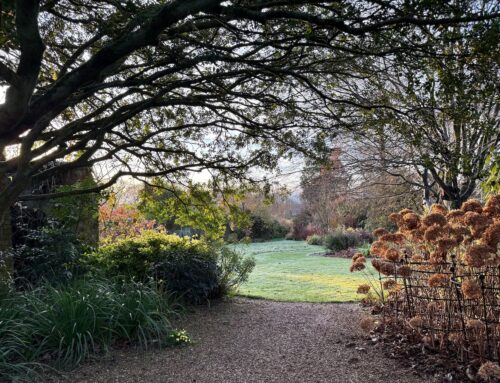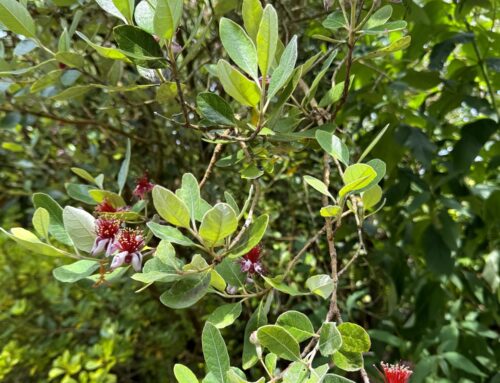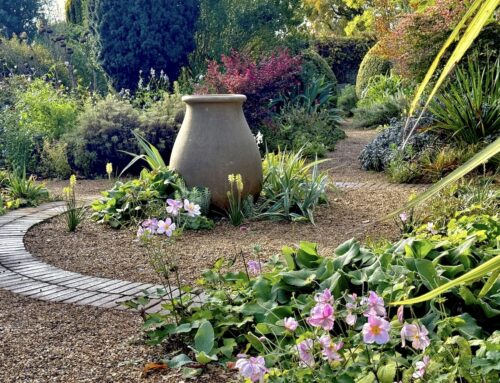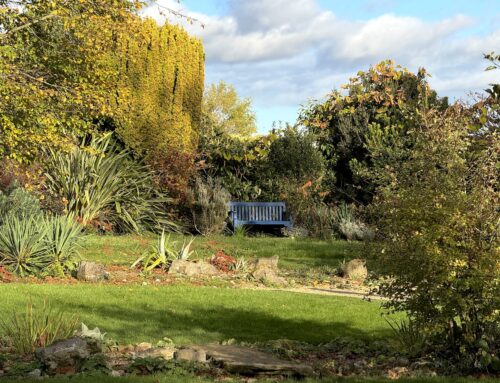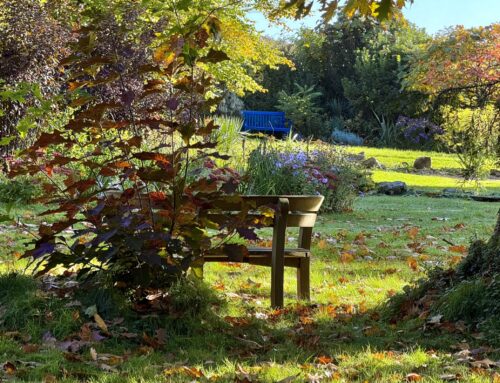Above: A Doublefile viburnum growing beside the lower pond.
May Plant-of-the-Month: Doublefile Viburnum (Viburnum plicatum f. tomentosum)
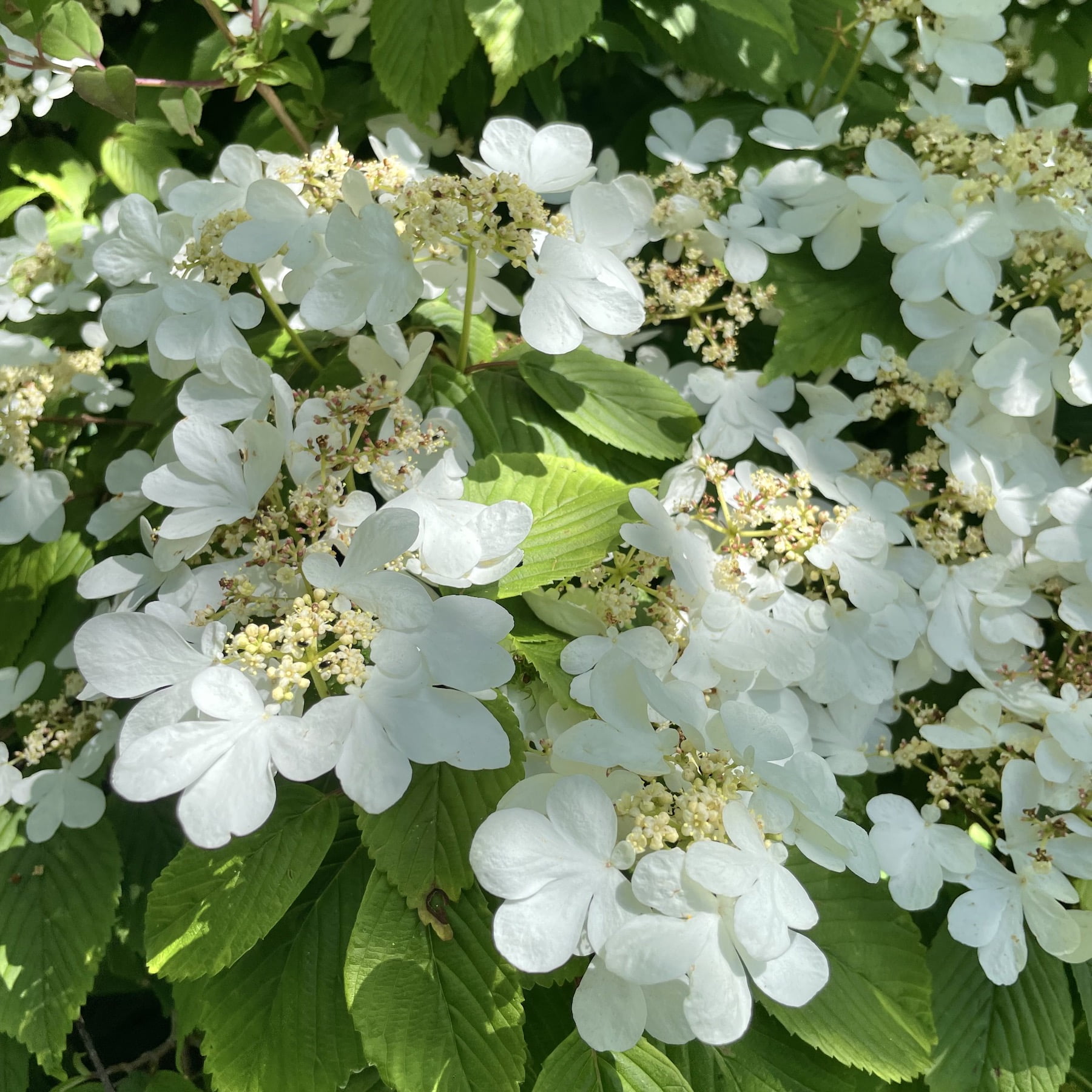
Above: The flower clusters resemble those lace cap hydrangeas and are arranged in pairs along long, horizontal branches.
There are over 150 different species of viburnum, and we grow several of them here at Denmans Garden. Some bloom early and are very fragrant while others bloom later and are less so; some are deciduous, and others are not; and some have good fall colour while others don’t.
Our showiest viburnum, the Doublefile Viburnum (Viburnum plicatum f. tomentosum), is a recipient of the prestigious Award of Garden Merit of the Royal Horticultural Society as well as our May plant-of-the-month — and with good reason. It has four seasons of interest, beginning in May when it’s creamy white flowers appear together in large flat clusters reminiscent of lace-cap hydrangeas and are borne in striking pairs along the shrub’s long branches giving the shrub a layered appearance. The branches grow horizontally, so it is a wide bush that grows wider, up to 3.6 to 4.5 meters (12 to 15 feet) than it does tall, 3 to 3.6 meters (12 to 15 feet). Altogether, it is an architectural shrub and is quite graceful.
Attractive to pollinators, the Doublefile Viburnum’s small summer berries are not as showy as some other species of viburnum but its oval red to black berries do attract birds.
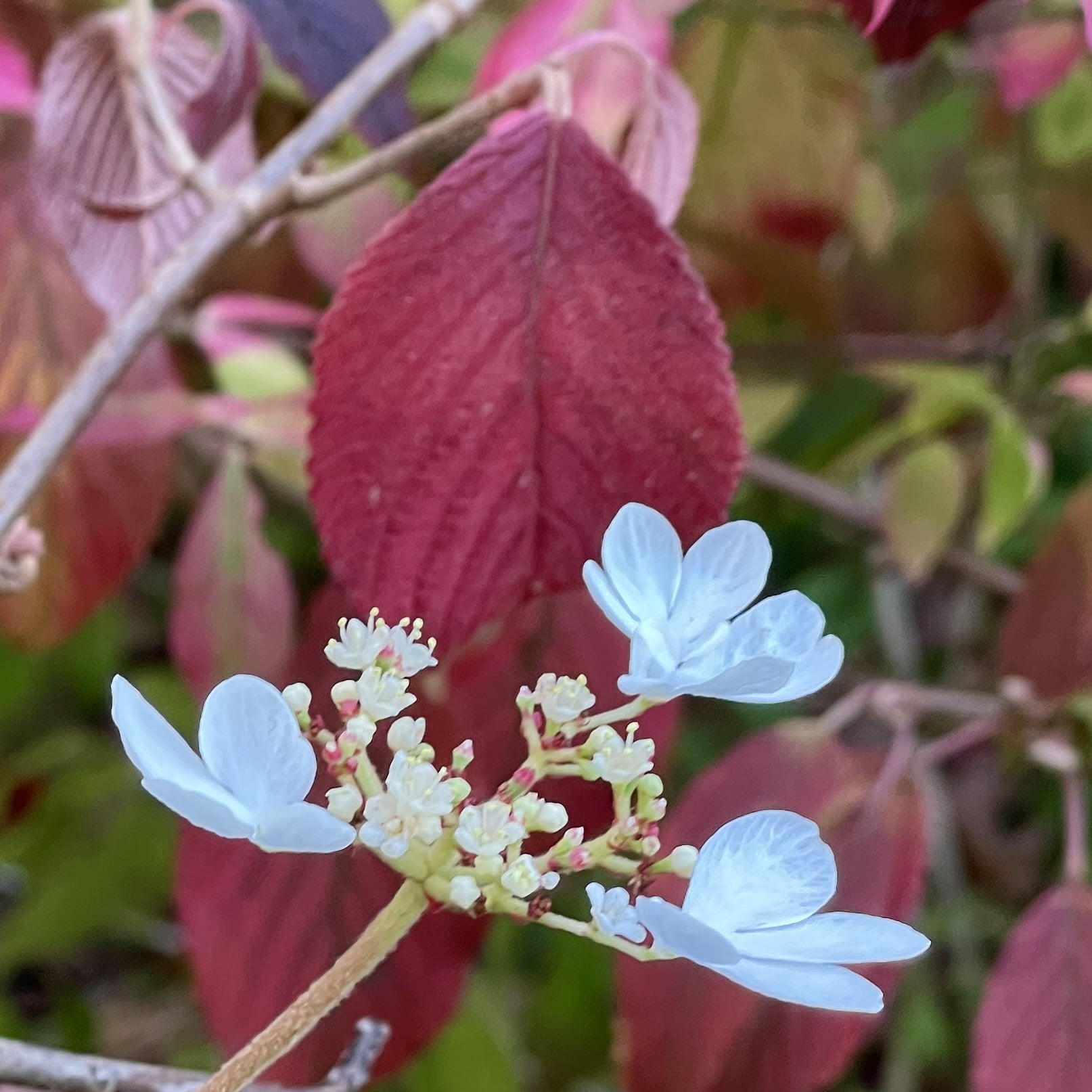
Above: The Doublefile Viburnum’s autumn colour is stunning.
In autumn it puts on a second show when its leaves turn a stunning burgundy red to purplish red, and occasionally smallish flower clusters appear as well. The genus name ‘viburnum’ comes from the Latin ‘viere’, which means to bend or weave. The specific epithets, ‘plicatum’ which comes from the Latin ‘plico’ meaning ‘folded’ and ‘tomentosum’ which derives from the Latin ‘tomentosus’ meaning “covered with tangled or matted, woolly hairs” are descriptive of this viburnum’s slightly pleated, slightly fuzzy leaves.
Because of its elegant structure, it is also beautiful in winter, especially when winter snow clings to its branches.
There are several specimens of Doublefile Viburnum in the garden that have been planted in different contexts. One grows at the end of the woodland that borders the Lower Nut Walk, another by the pond, and two others are part of denser shrub borders, and they are all in full bloom just now. The mature specimen beside the pond is the most magnificent and a definite show-stopper.
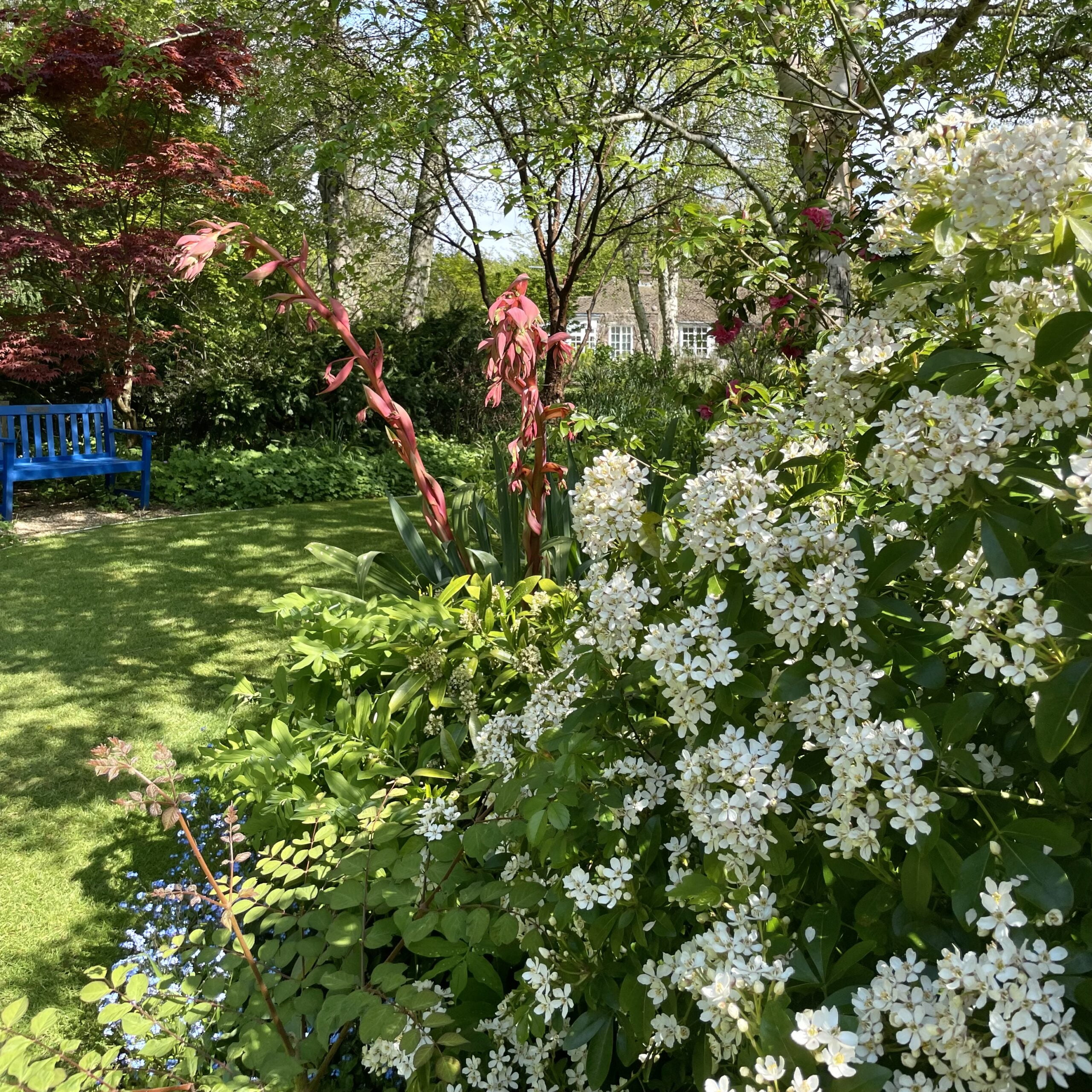
Above: Double File viburnum growing in a border that includes Mexican lilies and Mexican orange.
Because of its eventual size the Doublefile Viburnum, which is native to China and Japan, is best grown as a specimen or as part of a large border with other larger plants and masses of smaller plants. It is not a plant for small gardens though I have seen it successfully espaliered along a brick wall.
Finally, it can take full sun but seems happier in dry areas to be grown in full sun and tolerates temperatures as low as -15C (5F). Once established, it is moderately drought tolerant and tolerates a broad range of soil types, though it is happiest when it grows in fertile, humus-rich, well-draining, loamy to sandy soil that doesn’t dry out. A good layer of mulch helps it to establish and survive summer dry spells.

